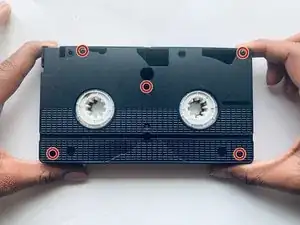
Plastic Shell
These are some common tools used to work on this device. You might not need every tool for every procedure.
The compact cassette is a magnetic storage medium created by Philips in September 1963. Compact cassettes rose to popularity in the 1970s and 80s as they provided a simple way to play music and were more portable than vinyl LPs. The compact cassette replaced older magnetic tape standards such as the 8-track and reel-to-reel, but all these formats used the same basic principles for recording using magnets. The tape has a thin layer of metal on it which is magnetized during recording to encode the audio signals (more info here).
A cassette player is a device that can read music from a compact cassette and (optionally) record new material onto the tape for your sweet mixtape. Phillips introduced the EL3300 in 1963 as the first cassette player on the market. Further cassette players could be found as part of a stationary stereo system in the home or in a portable boombox with built-in speakers. In 1979, Sony introduced the wildly successful Walkman, a small cassette player used with headphones. Cassettes and cassette players remained popular until the 1990s when CDs became the dominant format for distributing music.
Cassette players generally contain a hatch to load the cassette and two spindles inside that stick through the holes in the cassette. The most common issues with cassette players include dirty heads which can be cleaned with isopropyl alcohol and broken pulley belts which can be found for a low cost online and replaced. Give it a try!
Dolby noise-reduction on Wikipedia (this can make tapes sound better)
Cassette adapter on Wikipedia (use this if you have a cassette player but no tapes)
Exploring the cassette tape on YouTube (good video about the cassette)